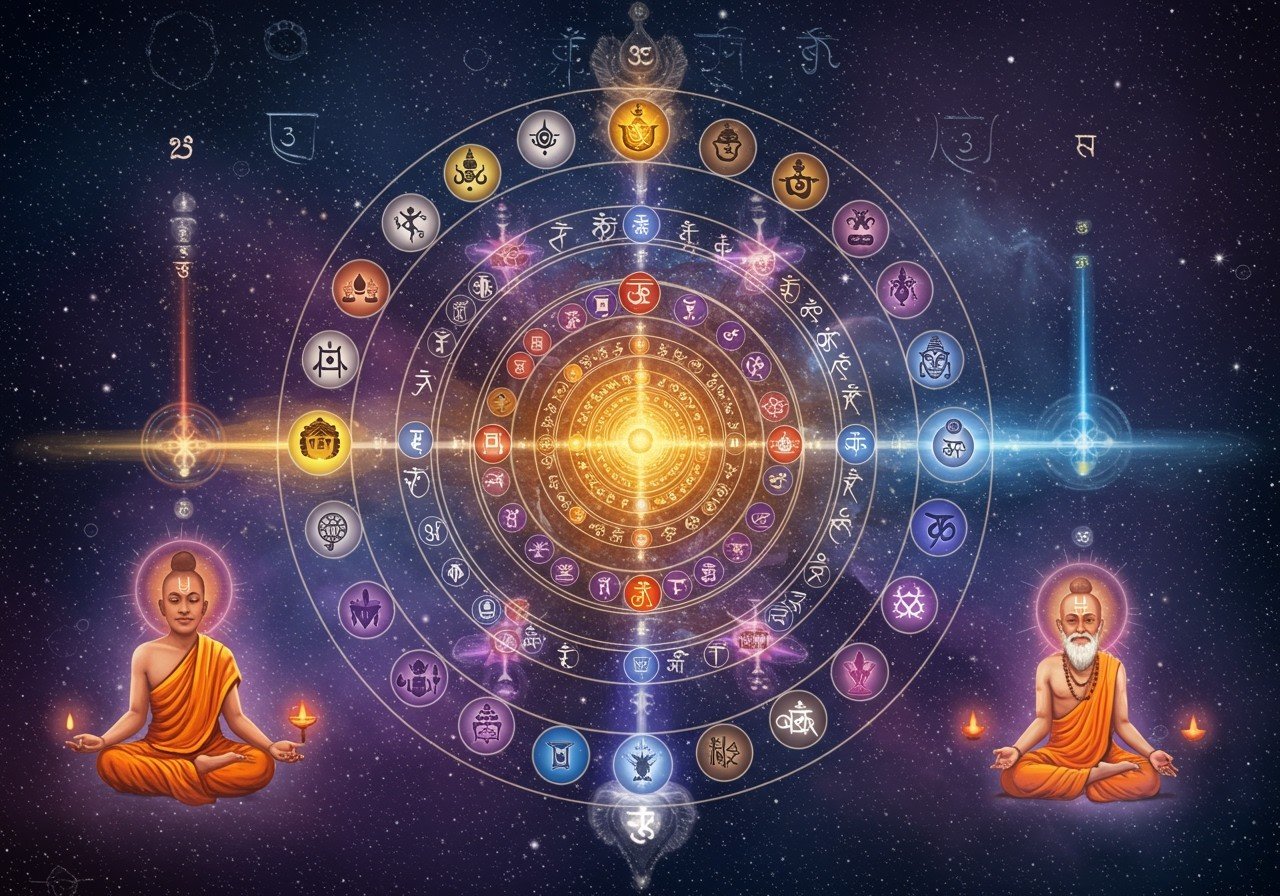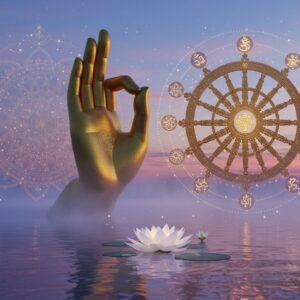
Delving into the profound world of Samkhya philosophy unveils a gateway to understanding reality’s dualistic essence. This ancient Indian philosophical system offers a comprehensive view of existence through its 25 Tattvas, fundamental principles that explain the universe’s structure, evolution, and the human experience. These Tattvas hold deep cultural significance in Indian tradition, attracting individuals drawn to ancient wisdom and its practical application in modern life.
A Brief Historical Overview of Samkhya
Samkhya philosophy, attributed to the sage Kapila, a revered figure in Indian intellectual history, boasts a rich lineage. This ancient system has significantly influenced other philosophical schools like Yoga and Vedanta, shaping the discourse on consciousness and reality. Throughout its development, key texts such as the Samkhya Karika and the Samkhya Tattva Kaumudi have played a crucial role in systematizing and explaining its intricate concepts. The dualistic nature of Samkhya, emphasizing the distinction between consciousness and matter, has fueled ongoing philosophical debates, particularly in contrast with monistic schools of thought, further enriching the tapestry of Indian philosophy.
Grasping the Core Concepts of Tattvas
Samkhya philosophy presents an intricate map of reality through its 25 Tattvas, fundamental elements that describe both material and spiritual realms. At the heart of this system lie the concepts of Purusha and Prakriti, the two primary categories of Tattvas.
Purusha, often described as pure consciousness, embodies the witness, a silent observer, detached and free from the activities of the material world. Like a serene mirror reflecting the world without being affected by it, Purusha remains untouched by the constant flux of Prakriti.
Prakriti, conversely, represents the dynamic force of nature, the source of all material manifestation. It is the ever-changing, evolving principle from which the universe arises. Comprising three Gunas – Sattva (purity, harmony), Rajas (activity, passion), and Tamas (inertia, darkness) – Prakriti remains unmanifest when these qualities are in equilibrium. However, any disturbance in this balance triggers the evolution of the remaining 23 Tattvas, leading to the manifestation of the material universe.
Unveiling the 25 Tattvas
These 23 Tattvas unfold from Prakriti in a specific order, each building upon the previous one. Buddhi, or Mahat (cosmic intelligence), emerges first, providing the capacity for discernment and decision-making. From Buddhi arises Ahamkara (ego, the sense of “I”), which shapes our individual identity and self-awareness.
Next is Manas (the mind), constantly engaged in processing thoughts, perceptions, and memories, much like a central processing unit navigating the influx of information from the senses.
Following Manas are the ten Indriyas, divided into Jnanendriyas (cognitive senses) and Karmendriyas (action senses). The five Jnanendriyas – Shrotra (hearing), Tvak (touch), Chakshus (sight), Rasanā (taste), and Ghrāna (smell) – receive sensory input from the external world. The five Karmendriyas – Vāk (speech), Pāni (hands), Pāda (feet), Upastha (genitals), and Pāyu (excretion) – facilitate our interaction with the environment.
Subtler than the Indriyas are the five Tanmatras (subtle elements): Shabda (sound), Sparsha (touch), Rūpa (form/sight), Rasa (taste), and Gandha (smell). These Tanmatras are the precursors to the gross elements, representing the potential for sensory experience.
Finally, the five Mahā-bhūtas (gross elements) – Ākāsha (space/ether), Vāyu (air), Tejas/Agni (fire), Āpaḥ (water), and Prthvī (earth) – constitute the tangible building blocks of the physical world, arising from the Tanmatras and providing the foundation for all material forms.
Prakriti and Purusha: The Dual Foundations of Reality
The interplay between Prakriti and Purusha forms the cornerstone of Samkhya’s dualistic perspective. Prakriti, the active principle, provides the raw material for creation, while Purusha, pure consciousness, serves as the witness. The path to liberation, or Kaivalya, involves the realization of the fundamental distinction between these two principles. When Purusha recognizes its inherent separateness from Prakriti, it achieves freedom from the cycle of birth and death, realizing its true nature as pure consciousness.
Practical Applications of Samkhya in Modern Life
In today’s fast-paced world, the wisdom of Samkhya offers valuable insights for navigating the complexities of life. Understanding the 25 Tattvas and the interplay of Purusha and Prakriti can lead to greater self-awareness, mental clarity, and emotional balance. By recognizing the distinction between our true Self (Purusha) and the ever-changing nature of our experiences (Prakriti), we can cultivate a sense of detachment and inner peace, finding solace amidst the challenges of modern existence. This ancient wisdom, deeply rooted in Indian tradition, empowers individuals to integrate timeless principles into their daily lives, fostering a harmonious blend of tradition and modernity.
Dive deeper into Hindu Philosophy
Explore the significance of Hindu Symbols
Poojn.in understands the importance of authentic materials for your spiritual journey. Whether you seek pure ghee for sacred offerings, diamond brand honey for abhishekam, or high-quality purascharan samagri, we offer a wide selection of items to support your practices and honor the 25 Tattvas.
Srimad Bhagavad Gita (Bengali Version)
FAQs: Delving Deeper into the Samkhya Tattvas
What are the 25 Tattvas in Samkhya? The 25 Tattvas are the fundamental building blocks of reality according to Samkhya philosophy. They encompass both conscious and material principles, offering a holistic framework for understanding existence. They are categorized into Purusha (pure consciousness) and Prakriti (the source of all material manifestations), with Prakriti further evolving into 23 additional Tattvas. These principles explain the evolution of the universe and the nature of human experience.
How do the Samkhya Tattvas explain the universe? The Samkhya Tattvas describe a universe arising from the dynamic interplay of Purusha (consciousness) and Prakriti (nature/matter). Prakriti, composed of three Gunas (qualities), evolves into the 23 other Tattvas, giving rise to the material world. This process of evolution begins with Mahat (cosmic intellect) and unfolds through the subtle and gross elements, explaining the structure and function of the cosmos from both material and spiritual perspectives.
What is the role of Purusha in the Samkhya Tattvas? Purusha represents pure consciousness, the unchanging witness of the material world. It is distinct from Prakriti and its evolutes, remaining unaffected by their constant transformations. Purusha’s role is to observe, without participating in the activities of Prakriti. Liberation in Samkhya involves the realization of Purusha’s distinct nature from Prakriti.
How does Prakriti relate to the 25 Tattvas? Prakriti is the source of all material existence and is the active principle in Samkhya philosophy. It is comprised of the three Gunas – Sattva, Rajas, and Tamas. When these Gunas are in equilibrium, Prakriti remains unmanifest. However, when this equilibrium is disturbed, Prakriti evolves into the remaining 23 Tattvas, giving rise to the manifest world.
What is Samkhya Tattva Kaumudi? The Samkhya Tattva Kaumudi is a crucial commentary on the Samkhya Karika. Authored by Vacaspati Mishra, it elucidates the complex concepts of Samkhya, providing detailed explanations and interpretations of each Tattva, helping readers to delve deeper into the nuances of this ancient philosophy.
Why is understanding the 25 Tattvas important? Understanding the 25 Tattvas provides a framework for understanding the nature of reality, consciousness, and the human condition. This knowledge facilitates self-discovery and spiritual growth, allowing individuals to gain insights into their true nature and the path to liberation. By understanding the distinction between Purusha and Prakriti, one can move towards a more balanced and fulfilling life.
How do the Samkhya Tattvas influence daily life? The Samkhya Tattvas provide a roadmap for understanding the human mind, senses, and the world around us. This understanding can contribute to increased self-awareness, improved decision-making, and greater emotional regulation. By recognizing the influence of the Gunas, individuals can cultivate a more harmonious inner state and a more balanced approach to daily life.
Are the 25 Tattvas unique to Samkhya philosophy? While other Indian philosophical systems may have related concepts, the specific framework of the 25 Tattvas, as described in Samkhya philosophy, is unique to this system. The way Samkhya describes the interaction of Purusha and Prakriti and the subsequent evolution of the Tattvas is a defining characteristic of this school of thought.
Learn more about Rudraksha and Tulsi
Explore Yantras and Yagyas
Enhance your spiritual practices with authentic puja items from Poojn.in. We offer a wide range of high-quality products, including copper kalash, diyas, and agarbatti, delivered conveniently to your doorstep across India.


